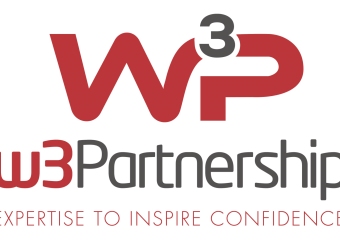Closing the Digital Divide – Seven things you need to get right in order to take advantage of the digitised supply chain.
More than ever before, commerce today relies upon close collaboration between businesses at all stages of the supply chain. This enables suppliers, manufacturers, distributors and ultimately customers to benefit from a boost in performance, reduced time-to-market and lower costs. Ultimately this means bigger profits, but it also gives businesses room to introduce innovation at every level.
Successful collaboration relies upon the exchange of data between businesses, something that needs to be accomplished quickly and securely in order to deliver real-time, up to date information with which to drive the decision-making process and contribute to the efficiency of the business. Due to the use of different systems and procedures there is a risk of a ‘digital divide’ existing between organisations that slows down the exchange of information. Bridging this and enabling the unimpeded flow of data is crucial to the success of collaboration initiatives. With that in mind here are the seven key things you need to get right in order to bridge the divide.
1 End-to-end Integration
To be successful, integration of systems needs to extend right across the supply network from the ordering of raw materials to the final delivery of goods to the consumer. The problem, of course, is that many different systems, running on disparate platforms, both in-house and in the cloud, and in a variety of locations, may be involved. Getting them to work together presents a major challenge.
API’s
Part of the key to getting everything working smoothly together is the use of APIs (Application Program Interfaces). These are the ‘glue’ that can link systems, providing the functions and protocols which are needed for software on different platforms and in different organisations to be able to interact smoothly and accurately. APIs are effectively the building blocks needed for any successful systems integration project to work.
Some level of API functionality is included in many systems, so as a first step in bridging the digital divide, integration teams must look at what level of service already exists and which areas need to be extended in order to get everything working together. But while off-the-shelf systems may well have the API function needed, it’s likely that older legacy systems do not.
Multiple businesses
While integration across the supply chain is a laudable aim, part of the problem with doing it is that the systems are going to exist in multiple different businesses. It’s true that increased adoption of as-a-service computing and cloud systems together with easy access to fast internet connections, eases the problem to some extent. But it isn’t a panacea.
What’s required is complete management visibility right across all of the businesses involved in the supply chain. That means close working relations are required with everyone from suppliers to distributors. This can lead to changes in working practices in order to streamline operations. For example, retailers can opt to have goods delivered in a form that’s ready to go straight onto the shop floor, minimising the need for additional handling.
Similarly, integration can be used to improve distribution by better route planning and more efficient loading, saving on fuel and other costs.
Internet of Things
A further complication, as well as a major opportunity, lies in the development of Internet of Things (IoT) devices. These look set to make the end consumer an integral part of the chain with intelligent devices that can order supplies independent of the user.
Extended to industry, the Internet of Things allows machinery to indicate when it needs maintenance or is running short of raw material. This further automates the production process, but also allows downtime to be factored into the whole manufacturing and delivery process so as to cause minimal disruption.
2 Real-time Data Exchange
Where in the past data may have been shared between companies as part of a batch process, perhaps overnight or even weekly, today things are able to move far faster. Part of bridging the digital divide, therefore, is to ensure that data can be shared in real-time.
Real-time data ensures that you avoid potentially embarrassing situations such as consumers ordering goods that are shown on a system as in stock when in fact they’ve sold out. This type of real-time integration is already used by many retailers, allowing customers to use a website to check which branches have particular items in stock.
Real-time integration
Systems integrated in real-time must be both reliable and robust, linking point of sale information to back office and stock control as well as to distribution. Of course, this doesn’t only affect links to partner companies; internal systems need to be well integrated too. They must also be flexible enough to accommodate increasingly popular consumer features such as click and collect. Achieving this, even in-house, can be harder than you might think, especially in organisations with a number of legacy systems still in use. When planning the roll-out of new ERP systems, this is something that should be high on the agenda from the outset.
3 Security and Trust
One of the most important things to address in integrating systems is keeping information secure. Cyber attacks and data leaks are a major issue so security needs to be addressed at every stage of the chain. Any networked system is only as secure as its weakest link. It’s therefore essential that standards are agreed with everyone involved in the supply chain. Your own systems can be secure but a breach of your data via a supplier’s system is just as embarrassing as if it had come from your own servers.
Sensitive data
This is particularly important where sensitive information such as payment details and customer addresses are involved. In many cases, the handling of this type of information will be governed by legislation or regulatory requirements. This type of data needs to be encrypted, both at rest and when it’s in transit between systems. Of course, you also need to guard the network from unauthorised access and protect the endpoints, so a holistic approach to security is required.
Trust
While the technicalities of security are important, you also need to consider the issue of trust. If you’re sharing information with another business you need to ensure not only that they’ll take good care of it, but that they won’t make inappropriate use of it to poach customers or otherwise gain a competitive edge.
As an early part of any integration project, therefore, you need to look at drawing up a confidentiality agreement to ensure all parties are aware of their responsibilities and will take proper care of the data.
4 Product Tracking
Part of addressing the digital divide is about knowing where things are in the process. Increasingly this means the use of technology such as radio frequency ID (RFID) tags or other internet of things devices. When attached to pallets, boxes, or even in some cases individual items, they allow products to be followed through all stages of the supply chain from factory to store.
There are obvious benefits to this in terms of ensuring the distribution process runs smoothly, but it can have other benefits too. In the food industry, for example, being able to track products ensures not only that they’re fresh, but also that there’s a full audit trail should any recalls be needed.
Standardisation
For tracking to work in an integrated supply chain, companies have to reach agreement on standardising the data held on the tags. Without standardisation, there’s a need to translate or cross reference product codes. Not only is this more likely to introduce errors in processing through incorrect data entry, but it can slow down the entire operation by introducing the need for extra steps. As with security, reaching agreement on the standardisation of tracking information may take time, but it will pay dividends in smoother operation in the longer term.
5 Integration Partners
Even for companies with a large in-house IT team, achieving integration of systems can represent a major challenge. For smaller businesses it’s something that they simply couldn’t contemplate without the need for a partner.
Goals
Whilst the goals of integration will be clear in terms of targets for smoother operation and increased sales, understanding the tools and technologies needed to reach them is where businesses can struggle. For systems and IT suppliers this should be their core competence and they should be able to demonstrate how they can put their existing resources to work to deliver effective operations.
Choosing an integration partner is therefore a major decision and something you need to get right. It’s important to get references from any potential integration suppliers. It’s advisable to speak to other users of any system you’re contemplating using – any reputable systems supplier won’t object to this. Check independent reviews too before commissioning any systems. This will help to avoid making costly mistakes.
Working relationships
You do of course need to establish a good working relationship with an integration supplier too. While it’s useful to have a single point of contact, such as an account manager, there are times when you’ll need to be able to talk directly to technical specialists in order to get issues resolved quickly. You therefore need to look not just at the system but at the surrounding arrangements for support, the on-going costs and so forth.
6 Planning
As with any major systems implementation, integrating systems requires careful planning. This starts with a detailed analysis of all the businesses involved in the project and their existing systems. This needs to be undertaken with the objective of setting clear goals and expectations for everyone involved.
It’s easy to fall into the trap of thinking that installing a new system is the goal and that the business must adapt to fit. In reality, it should be the other way around. IT systems are there to support the operation of the business. Your day-to-day operations shouldn’t have to change in order to accommodate the systems.
Human factors
It’s also vital to take account of human factors. Many of the staff who will benefit from an integrated system simply need information to be able to do their job. They’re not data scientists, but they do know what they need. It’s therefore crucial that they should be consulted at an early stage in order to ensure that their requirements are met.
Not only do your staff need to be on-board with any changes, they should be properly trained in the operation of integrated systems. This will ensure that both individuals and the business get the most out of any changes you make. Never lose sight of the fact that the human side of things is key, if it doesn’t work or if people haven’t had their needs listened to; then the chances that the systems will run smoothly are significantly reduced.
Planning stages
When integrating systems at all stages of the supply chain, partners need to work together. It’s essential to do the following:
- Research and understand requirements
- Identify systems to integrate
- Design APIs and other required interfaces
- Draw up an implementation plan
- Monitor for problems
Even with careful planning there’s no guarantee that a project will run smoothly. But with a robust plan in place you should be quickly able to identify and resolve any teething problems.
7 Navigating Change Barriers
All organisations have their own unique set of circumstances. In established businesses, supply chain systems may well have been developed over many years and will almost invariably have grown up internally to meet the organisation’s specific needs. Incorporating these legacy systems with an integrated supply chain can present a significant challenge.
Systems
The choice is often between adapting legacy systems, which can be a time consuming and expensive process or considering switching to a new solution in the form of an off-the-shelf package. Going down the replacement route raises further questions as to whether it’s better to replace just the parts of the system required for the supply chain or whether a move to a fully integrated ERP solution may be a better choice for the longer term. While making a major systems change at the same time as considering integrating with the supply chain isn’t to be taken lightly, it does offer the opportunity to make a choice that you can be sure will fit with your suppliers’ systems.
Market conditions
The modern world has seen an explosion in choice, with a plethora of products on sale from an ever-increasing range of suppliers. For supply chain businesses, this presents a key challenge as it means having to deal with a wider selection of items but probably with lower quantities of each line. This means greater complexity in ordering and tracking processes and potentially even more suppliers to be integrated into the chain.
External factors
Government legislation and industry regulation have to be factored into the planning of supply chain systems. The forthcoming European Data Protection Regulations (EDPR), for example, means that businesses will have to comply with new rules to protect customer information. When integrating, all systems across the supply chain will need to be made compliant. When dealing directly with consumers, the Payment Systems Directive (PSD2) which makes it easier for companies to take payments from bank accounts will come into play too.
Conclusion
You can’t avoid the fact that integration of the supply chain involves linking operations across different businesses and diverse geographical locations. This means that business systems and network infrastructure are thrown into the spotlight like never before. Systems need to be secure and able to work together, and the links between them need to be fast and secure to bridge the digital divide between businesses.
At the same time retailers are under increasing pressure to deliver a high quality service to their customers. Customer loyalty is no longer something that can be taken for granted. Whether your business is trading online or on the high street, there are plenty of opportunities for people to go elsewhere if you get it wrong.
All businesses also need to keep an eye on their bottom line and ensure that they remain profitable. This might sometimes appear to be incompatible with providing a good service and retaining customers, let alone attracting new ones. It presents a tricky balancing act for enterprises.
Integrating the supply chain at all levels helps enterprises deliver better products and services to their customers. In turn, this can lead to an improvement in their performance and, ultimately, their bottom line. A key part of this is delivering flexibility. Unless a business can be flexible it will lose out to the competition and will risk falling behind technological changes.
No one is claiming that moving to a fully integrated supply chain is easy to do. It requires commitment from all parties involved, but of course in the long run it benefits not just the manufacturer or the retailer, but the suppliers all the way down the chain too. Forward looking businesses at all levels have an opportunity to work with integration partners, exploiting technology as they respond to changing market trends, identify new channels through which to reach customers, whilst retaining tight control over their costs.
(Follow us also on www.closethedigitaldivide.com) or download whitepaaper




